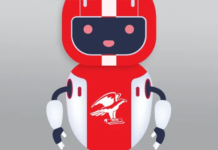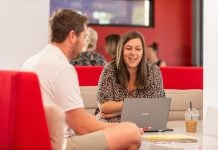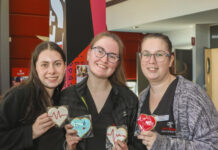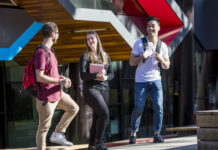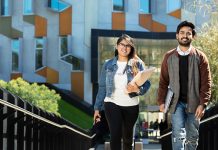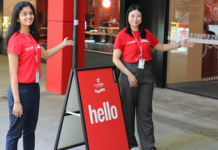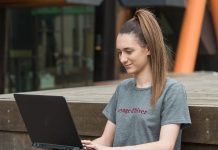By Beth Radulski
Project Officer: Neurodiversity; and PhD Candidate, Olga Tennison Autism Research Centre and Department of Social Inquiry
Midway through my bachelor’s degree at La Trobe I received some shocking news.
At the time, as a woman in my mid-twenties, I could not fathom that I was the type of person who could be affected by this: I was attending university, I grew up playing ice hockey, and I spent my early-twenties backpacking.
These were healthy, normal activities. This was a normal life for someone my age.
This is not what Autism looks like.
However, in reviewing my life through the lens of a mid-twenties Autism diagnosis, a series of past confusions bubbled to the surface: failing the ninth grade despite excelling academically as a child; struggling to maintain friendships despite having an active social life; dropping out of university the first time around after pushing through VCE and getting into my first choice school; and consistently losing jobs despite my best efforts.
I was no stranger to the common belief that Autism prevents Autistic people from achieving professional and social success—and I was mortified to realise that this description seemingly matched my own experiences. Deeply ashamed and fearful for my future prospects, I was determined to keep my new identity private—until now.

PhD and a new job
After grappling with my newfound identity, and exploring how it shapes my lived experiences, I began pursuing a PhD on Autism Activism and the Neurodiversity movement (I define Neurodiversity at 2:35 in this video). Last year, I publicly came out as Autistic in a blog article on my PhD. I am now the first openly Autistic Autism researcher at La Trobe’s Olga Tennison Autism Research Centre, and am implementing my work into various related projects, including making La Trobe a Neurodiversity Hub institution.
Further challenging my once-held beliefs that Autism would threaten my career success, in late-2019, I was humbled by an invitation to become La Trobe University’s inaugural Project Officer: Neurodiversity, under the Deputy Vice-Chancellor Academic. This has now become a permanent position as I have moved into the role of Project Manager: Neurodiversity, overseeing a small team represented by a majority of neurominority staff. This Student Success role focusses on improving tertiary and workplace accessibility for students and staff with what I refer to as ‘minority Neurotypes’ (Autism, ADHD, dyslexia, etc.). I am incredibly proud to see La Trobe becoming a leader in this field, and after years of struggling throughout my own educational and career pursuits, it is uplifting to see change on the horizon for others.
With all this said, in sharing my story, I want to avoid a common trope: the narrative arc of an ‘inspiring’ disabled person overcoming their personal limitations to achieve success. Rather, I aim to challenge this idea by highlighting the importance of Neurodiversity acceptance and accessible working conditions in supporting people with minority neurotypes.
The challenges that 2020 brought forth —namely, the COVID-19 pandemic and subsequent social distancing protocols lasting over 260 days in Melbourne— offered a unique opportunity to teach and learn about Neurodiversity. I hope to use the widespread challenges of working, learning, and socialising from home as teaching tools:
- I aim firstly to demonstrate to employers, educators, and support networks the necessity and practicability of Neurodiversity accessible practices.
- Secondly, in doing so, I hope to challenge the corresponding idea that Neurodiversity must be ‘overcome’ at in individual level for success to prevail.
To achieve this, I will present three things that working, learning, and socialising from home has taught us about Neurodiversity:
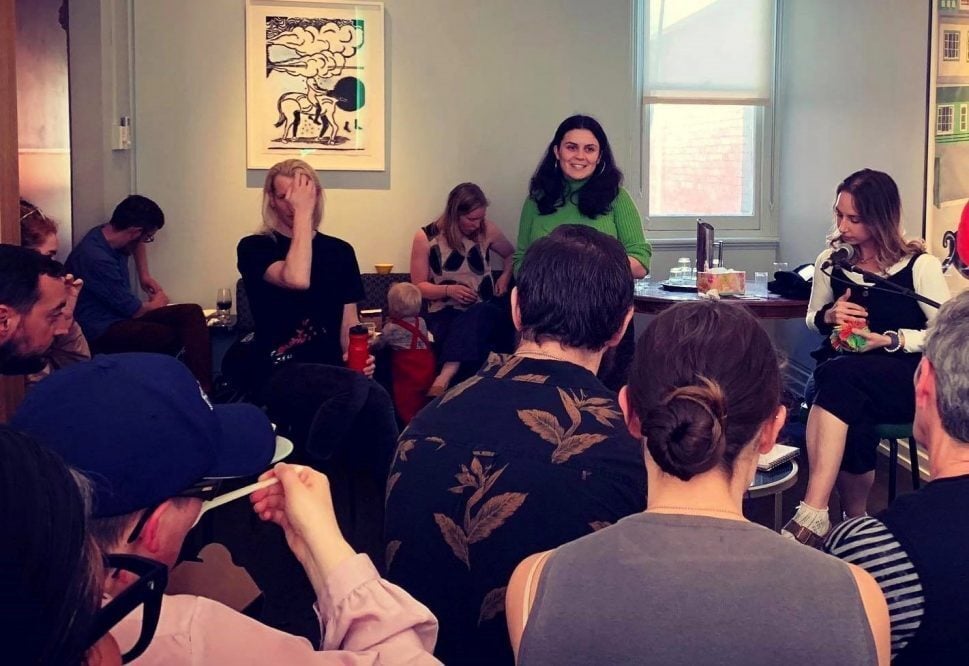
Zoom Calling: The frustration of dominant social norms
There is no question that video conferencing technology played a valuable role during the COVID-19 lockdowns by enabling us to continue working, learning, and socialising from home, without access to our usual environments. However, while video conferencing was certainly a useful tool during and after the pandemic, it emerged with its downsides also.
Adapting to a new medium of social communication which impedes the usual reliance on visual cues, body language, and non-verbal communication was exhausting—even for those who are usually energised by social life. So high was the mental cost of video calling, that it now has its own term, namely Zoom Fatigue.
However, for many people with minority Neurotypes, coping with social fatigue is standard. As an Autistic person, my daily social life is characterised by:
- Feeling like I’m ‘missing part of the picture’ and struggling to read the room
- Experiencing a lag between when a person says something, and when I process and understand it—and feeling like the conversation often rushes forward before I’ve caught up.
- Group conversations feeling like an endless juggling act: when is it my turn to speak? How do I signal my interest without interruption—and why do I so often miss the chance to speak altogether?
- Constantly monitoring my facial expressions and body language: Where should I look, and when should I smile or nod?
- Being hyper-aware of the sounds of my surroundings; an experience akin to a lecture-sized group call where nobody mutes their microphone; and finally
- Being exhausted by the focus and attention that the above points demand.
If these issues sound more familiar post-pandemic than they did prior, it is likely because these challenges were all reported by those struggling to adapt to online learning, working, and socialising via video conference.
However, even now that Video Calling has become a crucial social skillset, most of us would not apply the label of ‘social disorder’ to someone struggling to adapt. There is a general understanding that this new normal is not well-suited to all—that face-to-face communication is simply better for some.
What this experience can show us is that Neurotypical communication norms—metaphor, body language, verbal instructions, and more—are, for many people with minority Neurotypes, what video conferencing is to many Neurotypicals: a less-than-ideal communication ‘norm’ that hinders otherwise functional social skills. Accepting these differences, and seeking out resources on supporting and engaging with a Neurodiverse cohort, can vastly improve communication between us all.
Home offices (or lack thereof): The importance of accessible working environments
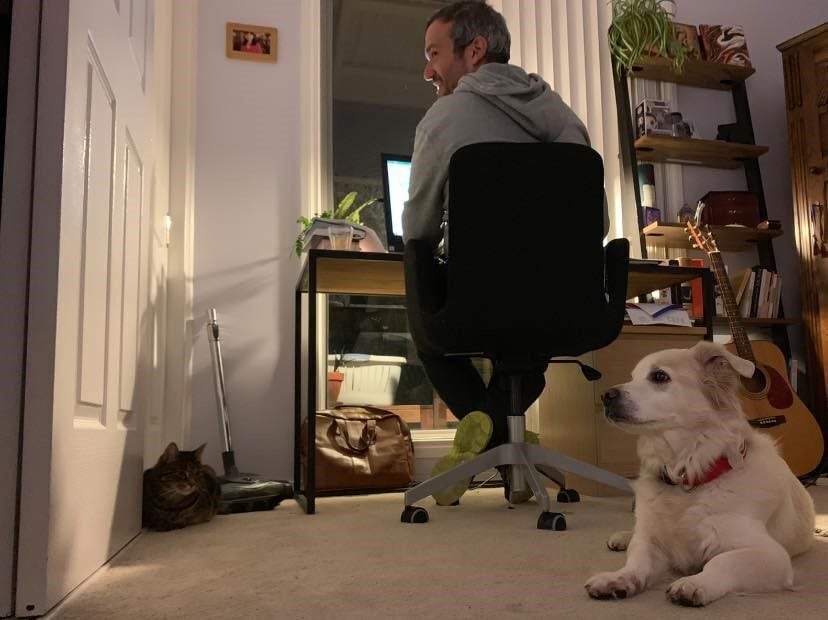
While there’s no question our cats, dogs, and other pets are now having the time of their lives with us home full-time, for most of us, the experience of working, learning, and socialising from home was significantly less favourable. For many, unsatisfactory work/study environments presented new challenges:
- Uncomfortable work spaces with poor lighting, seating, or desk space
- Difficulty focusing, with issues ranging from louder than average workspace noise, to smells from the kitchen, to more frequent interruptions from family or flatmates.
- And of course, as mentioned above, difficulty adapting to Video Conferencing in an environment not necessarily suited to hosting your boss and colleagues.
The pressure of achieving optimal productivity in suboptimal settings was, for many, exhausting. However, one positive takeaway from the widespread struggle to adapt to the home office (or lack thereof), has been a better appreciation for the necessity of Neurodiversity accessible environments.
For many people with minority neurotypes, challenges similar to those listed above have always been the workplace status quo. In many cases, these cohorts are considered at best ‘difficult’ or ‘high maintenance’ due to perceived personal preferences (dimmer lighting, private office space, working from home); and at worst, simply unemployable.
I am particularly privileged to work at an institution which goes above and beyond to make my workplace accessible. My colleagues support my inclusion in numerous ways, all of which can be practiced in most settings with little downside or financial commitment.
Some of these include:
- Allowing flexible working arrangements/mixing office work and working from home.
- Turning off overhead lighting in staff meetings wherever possible, and opening blinds for natural lighting instead.
- Permitting assistive devices or technologies, i.e. wearing sunglasses inside where lighting cannot be changed, noise-cancelling headphones and permission to listen to music, or text-to-voice software for those who experience periods of non or minimally verbal functioning.
Now more than ever, there is potential for a rapid shift in perspectives on the feasibility of Neurodiversity accessible environments.
The challenges faced during the COVID-19 lockdowns of working, learning, and socialising from home can teach us two things:
- Firstly, that accessible working environments should be considered essential and not a matter of personal preference; and
- Secondly, that employers and educators can become less tentative to catering for Neurodiverse cohorts, now that flexible, accessible arrangements are more readily available.
Avoiding public settings and social gatherings: The challenges of living in a limited world
For many Neurotypical and Abled people, the pandemic was the first time that limiting excursions from home became a long-term necessity.
Adjusting to the idea that public spaces are full of threats to health and safety—even in relatively safe places like grocery stores or classrooms—is, for many, a shock to the system.
The rules surrounding social distancing and essential reasons to leave home presented a new level of exhaustion associated with once-simple tasks like going to the grocery store; and an added emotional toll attached to navigating once-enjoyable social environments which became fraught with threats and obstacles at the height of Melbourne’s lockdowns. Suddenly, the world seemed smaller than ever, and moving beyond safe and familiar parameters—home, the neighbourhood, the grocery store—was no longer an appealing option. There was discomfort even venturing out without masks and sanitizer or gloves. Many were lonely but forgoing longed-for social interactions out of the sheer necessity of maintaining personal safety. For most, this level of extreme caution and wariness had been unprecedented.
However, for many people with minority neurotypes, public spaces almost always present similar hazards. For many, fluorescent lighting in a classroom, the smell of cleaning products in public bathrooms, or the beeping of a grocery store checkout is enough to elicit sensory overstimulation. Minimising exposure is crucial to maintaining overall health, and for some people with minority neurotypes, headphones and sunglasses are the necessities to never leave home without. Many experience frequent disappointment and loneliness when missing out on social engagements, opting instead to prioritise personal wellbeing. This degree of hypervigilance is standard in daily life.
One of the most interesting aspects of the pandemic lockdowns, as one Autistic disability activist puts it, is that now, it’s as if everybody is disabled. While concededly relying on a limited sample size of two, my partner Raúl and I are an interesting case-study in this context. We both work in similar roles, in the same department, at the same university, and we live in same apartment. Over the past few years we have shared many of the same stresses of working, learning, and socialising from home—and yet, our experiences are vastly different. I am Autistic, and Raúl is not. The challenges of communication breakdown, working in less-than-ideal environments, and living in a limited world, are routine aspects of my life that I’ve spent years learning to cope with prior to lockdown.
The challenges of communication breakdown, working in less-than-ideal environments, and living in a limited world, are routine aspects of my life that I’ve spent years learning to cope with prior to lockdown.
That’s not to say I did not struggle; however, my world simply didn’t shrink as rapidly or significantly as it did for Raúl, or indeed, most Abled and Neurotypical people.
Challenges that were once reserved for disabled people and those with minority neurotypes—particularly those surrounding the inaccessibility of public spaces, and the corresponding threat of social isolation—were suddenly everybody’s problem. The challenges of working, learning, and socialising from home have offered yet another valuable teaching tool: It offers a rare insight into the realities of living in a limited world, where safe spaces—home, a favourite restaurant, ‘Quiet Hour’ at the grocery store—are few and far between, and where personal health and wellbeing are frequently at risk in public spaces.
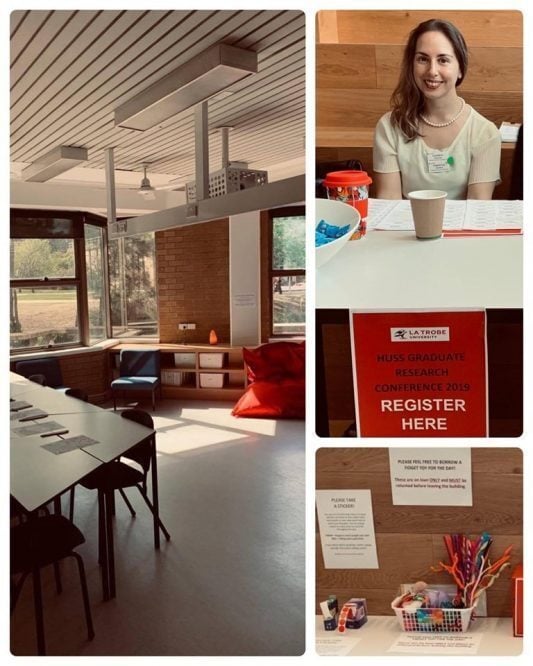
Features included a Neurodiversity Accessible Sensory Room (L), fidget toys (bottom R), and more.
Unfortunately, many people with minority neurotypes continue to struggle to find and maintain employment, adequate educational opportunities, and social inclusion; often with people and institutions who are not supportive of assistive technologies, reasonable adjustments for disability, or flexible work or study from home arrangements. Largely as a result of these issues, people with minority neurotypes are disproportionately under and unemployed.
In many such cases, opportunities are hard to come by not because a minority neurotype renders one incapable of participating, but because those in positions of power feel incapable of offering flexible or accessible arrangements.
For many Neurotypical or Abled people, the pandemic was the first (and perhaps only) instance of an extended period when the new dominant norm of working, learning, and socialising from home did not line up with individual strengths and limitations. So, for those who learnt to adapt to those new norms, I encourage you to ask yourselves the following questions: did you struggle socially, professionally, or psychologically with mandatory lockdown measures because you were disordered; or were the current cultural norms simply not allowing you to perform at optimal level? These issues—and the questions of biological vs. environmental disability—are at the crux of the Neurodiversity and Disability Rights movements.
Returning to my opening thoughts, I hope that this article challenges the idea that Neurodiversity is itself a problem, or that people with minority neurotypes or disabilities must overcome their own personal burden to become productive members of society. I hope to have also shed light on the social, environmental, and cultural factors that present barriers to success for these populations; and finally, to offer lessons and solutions which can arise from working, learning, and socialising from home, and bring us closer to a cultural shift towards Neurodiversity acceptance.

